Editor’s Note: This blog was updated on October 16th to reflect the latest information.
At-home ketamine therapy has emerged as a concerning trend in mental health treatment, leading to severe outcomes, including laryngospasm-induced deaths. This shift away from best-practice models has resulted in increased self-administration of sublingual ketamine, posing significant risks to individuals seeking relief from mental health symptoms.
The diversion from best-practice models has caused an increase in the self-administration of sublingual ketamine, commonly known as take-home or at-home ketamine.
Scenic City Neurotherapy has witnessed tragic outcomes, including laryngospasm-induced deaths, linked to the promotion of at-home ketamine by certain entities. Misleading information within the medical community has resulted in more practitioners prescribing these substances without a full understanding of their risks, potentially endangering individuals seeking relief from mental health symptoms.
How Did At-Home Ketamine Begin?
The onset of the COVID-19 pandemic facilitated the prescription of controlled substances via telehealth, paving the way for at-home ketamine therapy. Consequently, with billions invested in advertising by telehealth companies and prescribers, at-home ketamine was marketed as a miraculous drug without any regard for patient safety. However, this disregard for safety sparked valid concerns among healthcare providers regarding patient well-being, treatment efficacy, and long-term health outcomes.
What Does the Research Reveal?
The Future of Mental Health: Ketamine Therapy Report by All Points North (APN) highlights the dangers of self-administered ketamine, warning of increased dependency on this controlled substance in the absence of professional supervision. Shockingly, 55% of Americans who have tried at-home ketamine stated either accidentally or purposefully exceeding the recommended dose. The report also emphasizes the necessity of ketamine therapy with ongoing psychotherapy under the guidance of a knowledgeable clinical team.
Raw Experiences of At-Home Ketamine Use
After discussing the findings of the 2023 Mental Health Report: Ketamine Therapy, it’s crucial to share insights from those who have firsthand experience with at-home ketamine use. Below, we present testimonials compiled by our Medical Team, who have listened to and documented the experiences of individuals undergoing at-home ketamine therapy:
Case 1:
A 36-year-old male, happily married with a child and with no significant medical history, tragically lost his life due to an unforeseen consequence of self-administered ketamine. He had been taking his prescription of sublingual ketamine from a popular online prescriber for several months without incident.
The cause of death was deemed a fatal laryngospasm after ingesting 350mg of the drug. His spouse discovered him unconscious, reinforcing the perilous outcomes associated with at-home ketamine use.
Case 2:
A 28-year-old female, documented to have a history of hyper-reactive airways, succumbed to asphyxiation following the self-administration of sublingual ketamine. The distressing incident occurred when she opted for the sublingual route over the intravenous method, citing financial constraints.
Despite daily adherence to prescribed ketamine from an online prescriber, her decision proved fatal. Found down by her young son, this tragedy highlights the lethal consequences of resorting to at-home ketamine use.
Case 3:
A 20-year-old male, under the care of an online prescriber for sublingual ketamine, faced a life-altering event from his first dose. He suffered an anoxic injury from aspirating vomit, a consequence of consuming 325mg of ketamine.
His nurse mother entered his room to check on him, noticing he had vomited. She then turned him onto his side and immediately dialed 911 for help. However, the aftermath leaves him with anticipated lifelong deficits, serving as a powerful reminder of the severe risks associated with at-home ketamine administration.
Case 4:
A 31-year-old female who stabilized with our practice four years ago shared her experience with at-home ketamine use. She was prescribed daily sublingual ketamine troches at a dosage of 350mg. Despite not finding it helpful, she used it desperately for relief. However, she began experiencing concerning symptoms, including long, stringy blood in her urine.
Upon contacting our clinic, our Medical Team advised her to discontinue the troches. She encountered some withdrawal symptoms following the discontinuation of frequent, high-dose ketamine troches, but fortunately, the bladder symptoms went away. We re-educated her on the dangers of self-administered anesthetics and cautioned against the practices of unethical providers prescribing take-home ketamine.
Case 5:
Matthew Perry’s death, reportedly linked to at-home ketamine use, paints a picture of a human caught in the throes of a misunderstood treatment. Despite adhering to what were likely prescribed guidelines, Perry met a tragic fate, drowning after ingesting a substantial dose of ketamine while relaxing in his hot tub.
This incident highlights the need for greater awareness about the risks of unsupervised ketamine therapy and emphasizes the importance of seeking proper medical guidance in managing mental health conditions.
These secondhand accounts, gathered by our Medical Team from the experiences of our patients, along with the tragic narrative of Matthew Perry, provide invaluable insights into the realities of at-home ketamine use. They serve as a powerful reminder of the importance of seeking proper guidance and supervision when considering ketamine therapy.
What is the Optimal Alternative?
While sublingual ketamine may offer convenience or accessibility in certain situations, it falls short of the gold standard set by IV ketamine administration. In contrast, the IV administration route ensures precise dosage control, enhanced safety measures, emergency response capabilities, and proven results. Ethical ketamine therapy providers refrain from sublingual routes in favor of IV administration for these reasons, as depicted in the comparative chart below.

Urging for Best Practice Protocols
It’s essential to consider the best path forward in your journey towards better mental health. If you or someone you know is considering at-home ketamine therapy, we urge you to prioritize safety and effectiveness by exploring IV ketamine treatment.
At Scenic City Neurotherapy, we’re committed to providing the highest standard of care for our patients. As a community care provider with the VA, we offer treatments to veterans at no cost, ensuring accessibility for those who have served our country. Additionally, we accept FSA and HSA payments, and offer flexible payment plans to accommodate your financial needs.
Whether you choose us or another reputable clinic, your well-being is our top priority. We’re here to guide you towards the most effective treatment options and support you every step of the way on your path to healing.
Before we part ways, allow me to share a testimonial from one of our patients who experienced the life-changing effects of IV ketamine therapy.
Their story is confirmation of the power of seeking proper guidance and embracing evidence-based treatments:
The staff kept telling me that this treatment was life-changing. I was skeptical at first, but now I get it. Before when I would stress, I would sink into depression. Now, when I feel stressed, it’s just normal stress anyone would feel. I still feel emotions and stress, but I’m managing all of it so much better now and the ‘lows’ are gone. This stuff really does work, and if you put in the effort, it is life-changing.
This testimonial affirms the impact that IV ketamine therapy can have on your mental health and quality of life. We invite you to reach out to us to learn more about how IV ketamine therapy can make a difference in your life, just as it did for them.
Together, you and Scenic City Neurotherapy can prioritize your safety and well-being by choosing best-practice treatment methods tailored to your needs and circumstances.
References
- Kuntz, Leah. (2023, March 13). Report Reveals More Than 50% of Americans Misuse At-Home Ketamine. Psychiatric Times. Retrieved from https://www.psychiatrictimes.com/view/report-reveals-more-than-50-of-americans-misuse-at-home-ketamine







